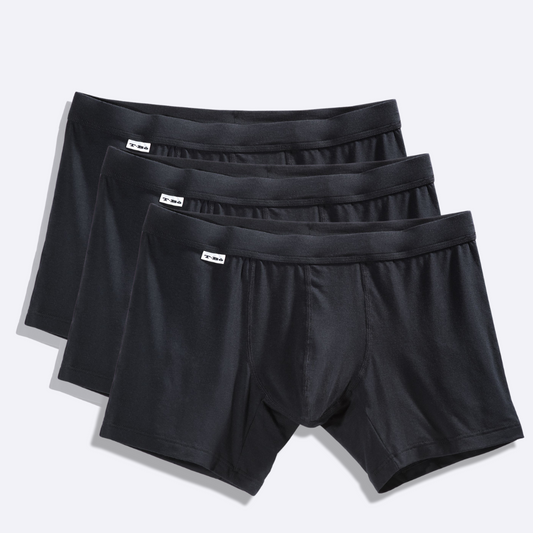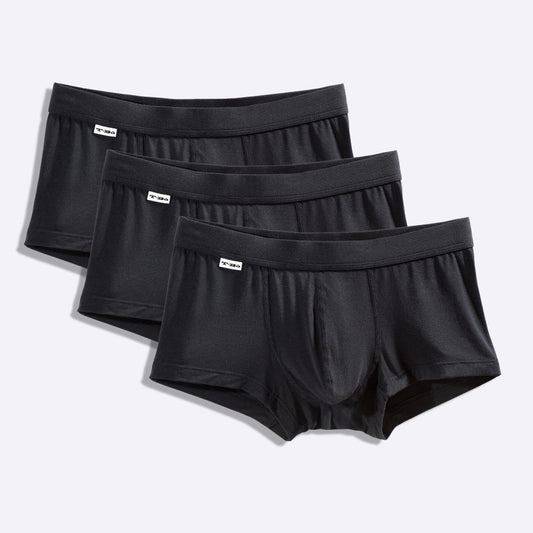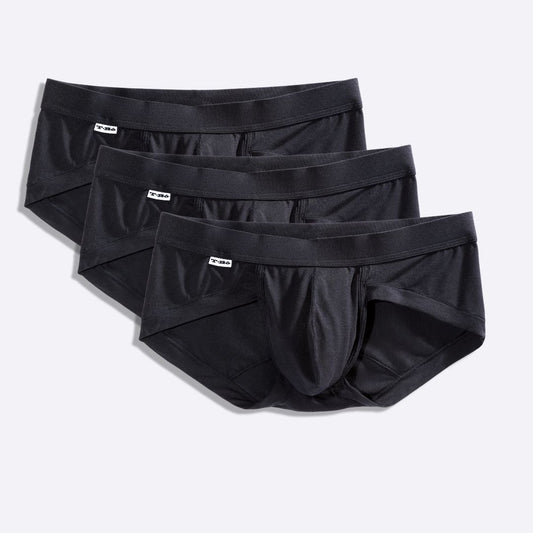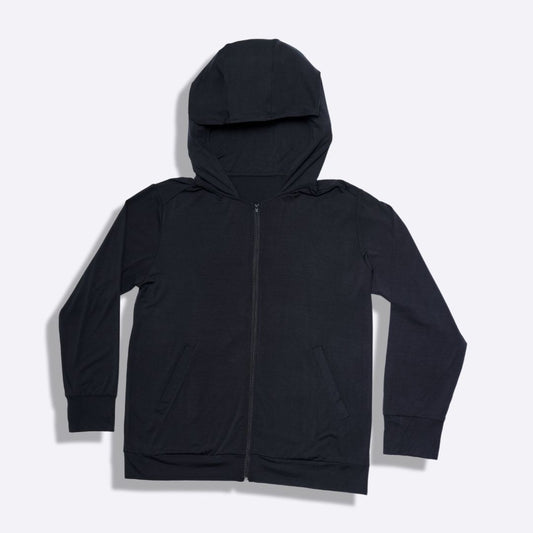
Understanding Anxious Attachment Style: Origins and Impact
If you've ever felt a constant need for reassurance in relationships or experienced intense fear of abandonment, you might be familiar with the concept of an anxious attachment style. Stemming from early experiences in life, this attachment style can profoundly shape how we relate to others, impacting our emotions, behaviors, and overall well-being.
What Does it Mean to Have an Anxious Attachment Style?
Psychology Consultant, Bayu Prihandito shares with us that, “Anxious attachment behavior is a pattern where one partner displays a high level of insecurity and fear of abandonment. This behavior stems from early experiences where they may not have had consistent or predictable responses from their parents, leading them to crave closeness and approval but also to fear rejection and separation intensely.”
Individuals with this attachment style often crave intimacy and connection but may struggle with feelings of insecurity and doubt within relationships. They tend to worry excessively about their partner's feelings and intentions, seeking constant validation and reassurance to alleviate their fears.
What Does Anxious Attachment Stem From?
Psychologist Adam Horvath, lets us know “There are three main types of attachment styles: secure, insecure (anxious or avoidant), and disorganized. Attachment styles form in very early childhood, partly based on our genetics and partly on how our parents respond to us.
Anxious attachment is a type of insecure attachment style and approximately 20% of the population forms relationships with this style. People with an anxious attachment style worry about their relationships and closeness and feel insecure in them, often needing reassurance and validation. They need closeness and often fear abandonment, which may come across as needy or clingy.
People with anxious attachment styles often express distress to others, seeking attention and support. While this behavior may have served them well as children with busy parents, it can push others away in adulthood. Nonetheless, sometimes this distress does elicit the care they seek, fostering an unhelpful cycle of dependency and anxiety in their relationships.
People with anxious attachment styles experience stress strongly and vividly remember stressful memories, and they often struggle with suppressing their negative thoughts about their relationships. Therapy can help to work through these thoughts and to form a more secure attachment to others.”
How do You Know if You Have an Anxious Attachment Style?
Psychotherapist Ronnie Adamowicz says “Anxious attachment behavior is a pattern seen in individuals who fear abandonment and crave closeness and reassurance in relationships excessively.
Signs of an anxious attachment include a constant need for affirmation, sensitivity to relationship changes, and a fear of rejection or abandonment. They may also exhibit jealousy or attempt to control the relationship to alleviate their anxiety.”
Here are some signs that your partner has an anxious attachment to you:
-
Constant need for reassurance: They often seek validation of your feelings for them and need regular affirmations of your love and commitment.
-
Heightened sensitivity: Small actions, like responding late to a text or a change in plans, can be perceived as signs that the relationship is in danger.
-
Clinginess: They may rely heavily on the relationship to define their self-esteem, showing reluctance to spend time apart or have independent interests.
- Difficulty trusting: Despite their need for closeness, they might struggle with trust and constantly worry that they are going to be betrayed or abandoned.
What Causes an Anxious Attachment?
Anxious attachment often originates from early experiences in childhood, particularly the quality of interactions with primary caregivers. When caregivers are inconsistent, unavailable, or unresponsive, it fosters insecurity and fear of abandonment in children. This might occur when caregivers prioritize their own needs over the child's or react unpredictably. Traumatic events like loss or separation can worsen these feelings, contributing to the development of an anxious attachment style. These early experiences shape individuals' beliefs about themselves and relationships, impacting their ability to trust, regulate emotions, and form secure attachments in adulthood.
How to Break Anxious Attachment?
Breaking an anxious attachment style involves a combination of self-awareness, intentional effort, and therapeutic support. Here are some strategies to help break free from the grip of anxious attachment:
Recognize Patterns:
The first step is to recognize and acknowledge the patterns of anxious attachment in your relationships. Reflect on your thoughts, feelings, and behaviors, noting recurring themes like seeking reassurance and fearing abandonment.
Understand the Roots:
Examine the origins of your anxious attachment style, tracing it back to early experiences with caregivers. Understanding these experiences offers insight into your relational patterns.
Challenge Negative Beliefs:
Challenge negative beliefs and assumptions about yourself and your relationships. Replace self-critical thoughts with more balanced and compassionate perspectives.
Realize your worth isn't tied to external validation; relationships can offer comfort instead of anxiety.
Develop Self-Esteem:
Cultivate a strong sense of self-worth and self-esteem independent of external validation. Focus on your strengths, accomplishments, and qualities that make you unique. Engage in activities that nourish your sense of identity and autonomy.
Practice Emotional Regulation:
Learn to regulate your emotions effectively, particularly in response to triggers that activate your anxious attachment style. Practice mindfulness techniques, deep breathing exercises, and grounding strategies to stay present and centered during moments of emotional distress.
Improve Communication Skills:
Enhance your communication skills to express your needs, desires, and boundaries assertively and effectively. Practice active listening and empathy to better understand your partner's perspective and foster mutual understanding and connection.
Establish Healthy Boundaries:
Set and maintain healthy boundaries in your relationships, clearly communicating your needs and expectations. Respect your own limits and prioritize self-care to avoid becoming enmeshed or codependent in your interactions with others.
Seek Therapy:
Consider seeking therapy, particularly approaches such as attachment-based therapy, cognitive-behavioral therapy (CBT), or dialectical behavior therapy (DBT), which can help you explore the roots of your anxious attachment style and develop healthier coping strategies. A trained therapist can provide guidance, support, and tools to facilitate your journey toward more secure attachment patterns.
How Does Anxious Attachment Style Affect Relationships?
The anxious attachment style profoundly affects relationships in numerous ways, impacting both the individual's satisfaction and the dynamics of the partnership.
Anxious attachers experience intense emotions like anxiety, leading to clingy behavior or emotional outbursts, straining relationships. Their constant need for reassurance stems from a fear of abandonment, perpetuating a cycle of seeking validation from their partner. This fear also triggers jealousy and possessiveness, as anxious attachers worry about losing their partner to someone else.
Dependency on their partner for emotional support and validation creates pressure and strain, potentially overwhelming their partner.
Trust issues further complicate matters, making it challenging to establish a foundation of security and mutual understanding. Communication for anxious attachers is challenging; they fear expressing true feelings could push their partner away, resulting in misunderstandings and conflict. This instability can hinder true intimacy, as relationships oscillate between closeness and distance. Ultimately, anxious attachment affects both individuals, with partners feeling overwhelmed by constant reassurance needs. Recognizing and addressing these patterns is essential for fostering healthier, more fulfilling relationships.
In conclusion, understanding and addressing anxious attachment style is crucial for fostering healthier, more fulfilling relationships. Recognizing and addressing anxious attachment patterns enables individuals to overcome insecurity and fear, enhancing their connections with others. Through self-reflection, therapy, and developing healthier communication skills, actionable steps can be taken to cultivate more secure attachment patterns and foster greater intimacy and satisfaction in relationships.
As you embark on this journey of self-discovery and growth, remember that change is possible with dedication and perseverance.
Ready to embark on your journey towards more secure relationships? Take the first step today and shop our men's bamboo underwear collection. Crafted for comfort and sustainability, our underwear provides the support you need to feel confident and at ease in every aspect of your life. Treat yourself to the luxury of bamboo fabric and experience a new level of comfort and style.









